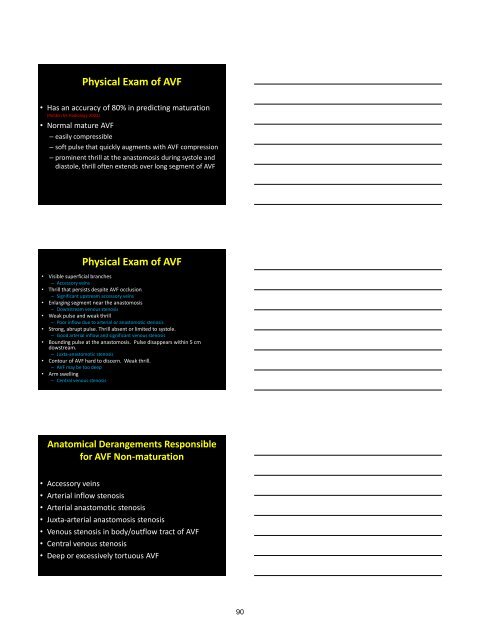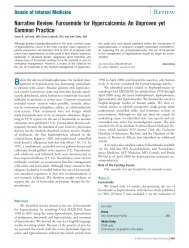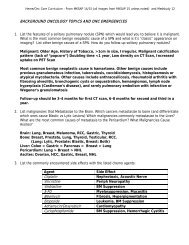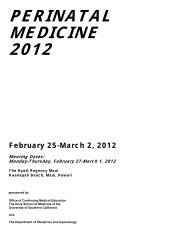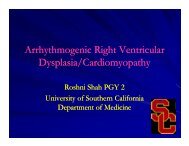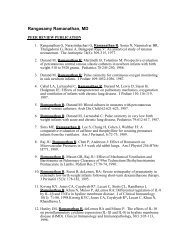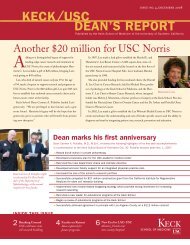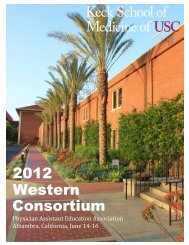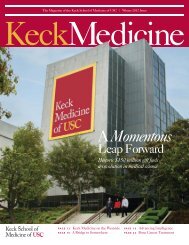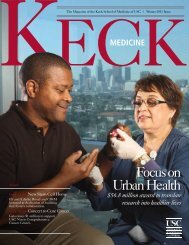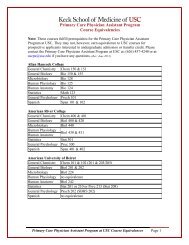Program Book - Keck School of Medicine of USC - University of ...
Program Book - Keck School of Medicine of USC - University of ...
Program Book - Keck School of Medicine of USC - University of ...
- No tags were found...
You also want an ePaper? Increase the reach of your titles
YUMPU automatically turns print PDFs into web optimized ePapers that Google loves.
Physical Exam <strong>of</strong> AVF• Has an accuracy <strong>of</strong> 80% in predicting maturation(Robbin M. Radiology 2002)• Normal mature AVF– easily compressible– s<strong>of</strong>t pulse that quickly augments with AVF compression– prominent thrill at the anastomosis during systole anddiastole, thrill <strong>of</strong>ten extends over long segment <strong>of</strong> AVFPhysical Exam <strong>of</strong> AVF• Visible superficial branches– Accessory veins• Thrill that persists despite AVF occlusion– Significant upstream accessory veins• Enlarging segment near the anastomosis– Downstream venous stenosis• Weak pulse and weak thrill– Poor inflow due to arterial or anastomotic stenosis• Strong, abrupt pulse. Thrill absent or limited to systole.– Good arterial inflow and significant venous stenosis• Bounding pulse at the anastomosis. Pulse disappears within 5 cmdowstream.– Juxta-anastomotic stenosis• Contour <strong>of</strong> AVF hard to discern. Weak thrill.– AVF may be too deep• Arm swelling– Central venous stenosisAnatomical Derangements Responsiblefor AVF Non-maturation• Accessory veins• Arterial inflow stenosis• Arterial anastomotic stenosis• Juxta-arterial anastomosis stenosis• Venous stenosis in body/outflow tract <strong>of</strong> AVF• Central venous stenosis• Deep or excessively tortuous AVF90


